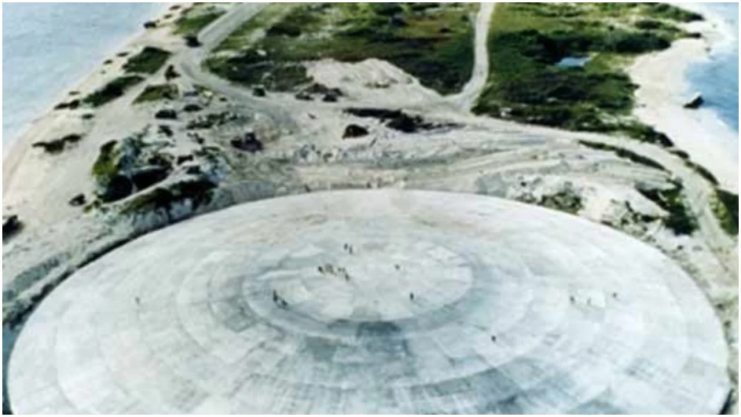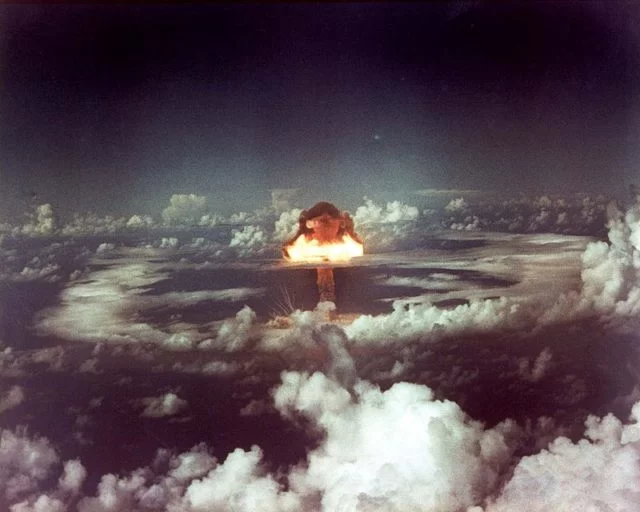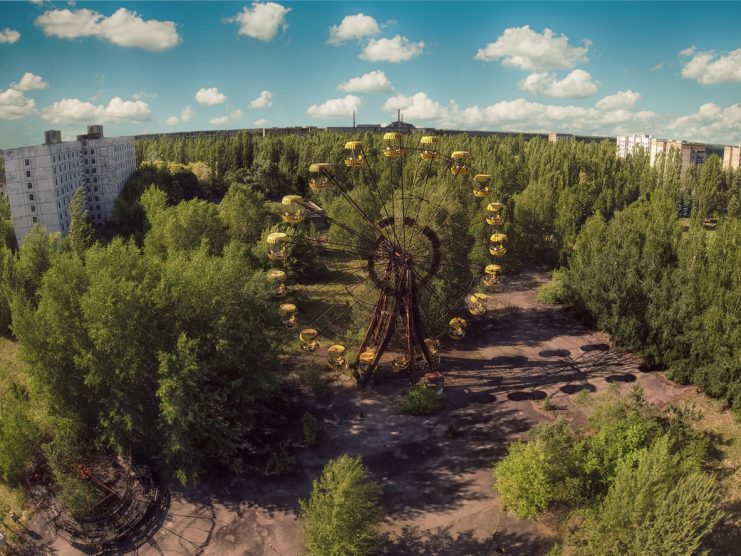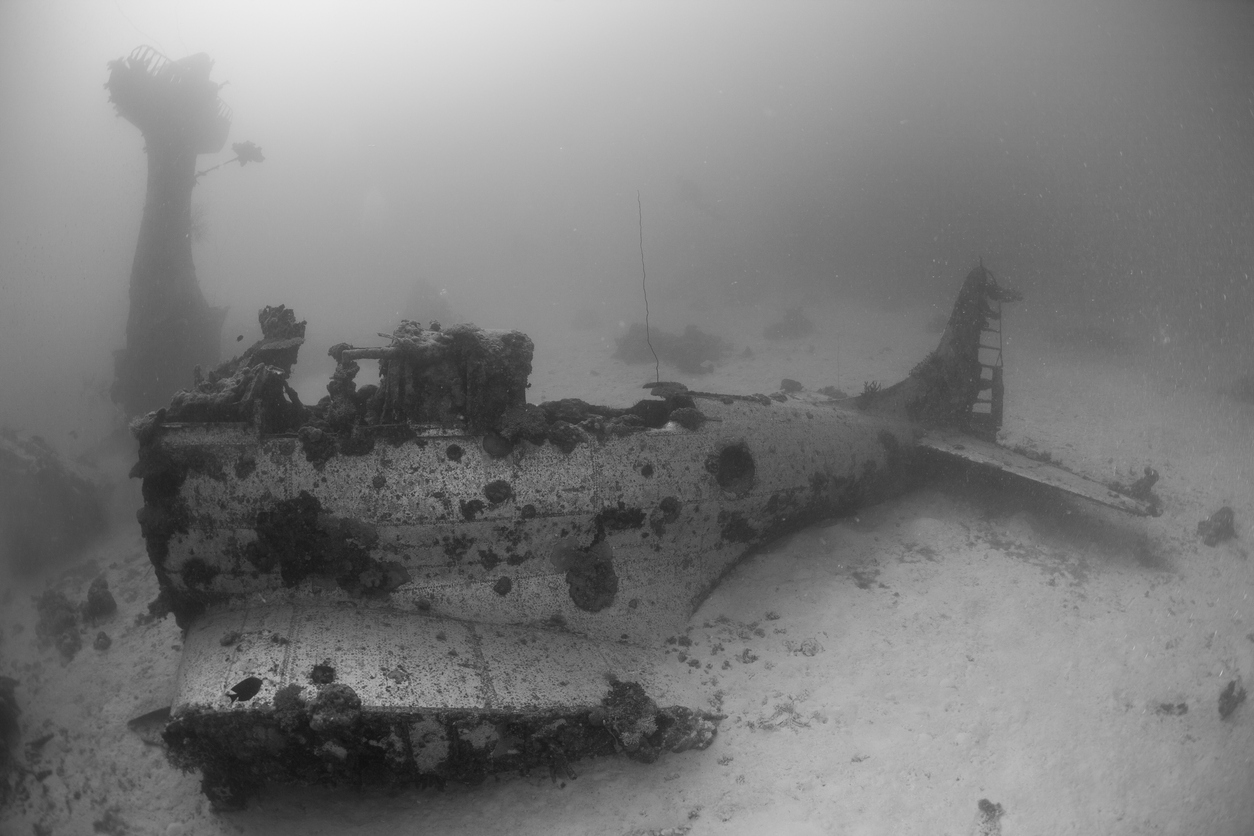The Marshall Islands are a chain of islands in the Pacific Ocean that lie between Hawaii and the Philippines. They contain the Bikini and Enewetak atolls which you may have heard of if you’ve studied your history lessons.
This is where the United States tested atomic weapons in the 1940s and 1950s. Though it has been over sixty years since testing ended there, the islands are still more radioactive than Chernobyl and Fukushima, sites of two of the worst nuclear reactor disasters.
In a recent study, researchers tested the soil of these sites for plutonium-239 and plutonium-240. In some places, the islands had levels that were ten times higher than soil in the Chernobyl exclusion zone.
While the study was limited, the results indicate that a more thorough test is warranted. The surprising thing to the researchers was that they could not find any guidance from governments or from international organizations which indicated what a permissible level of plutonium would be.

The US tested radioactive weapons in the Marshall Islands even after dropping atomic bombs on Hiroshima and Nagasaki during World War II. At the time, the islands were a district of the Trus Territory of the Pacific Islands. The US ran this district on behalf of the United Nations.
The first tests were carried out on Bikini Atoll in 1946 and involved two bombs names Able and Baker. Over the next twelve years, the US tested 67 weapons on the Bikini and Enewetak atolls.
Those tests included one in 1951 code-named Ivy Mike – the first hydrogen bomb test. The largest hydrogen bomb test occurred in 1954 with the Castle Bravo test. Castle Bomb was over 1,000 times more powerful than Little Boy. Little Boy was the bomb that completely destroyed Hiroshima.
The radioactive damage from the tests was not contained to Bikini and Enewetak, though. Fallout from the test contaminated the Rongelap and Utirik atolls which are also part of the Marshall Islands. People on those islands became sick from the radiation levels.

In 2016, a study of background gamma radiation on the three northern atolls in the Marshall Islands, Bikini, Enewetak, and Rongelap, found elevated levels of the radiation. The study found that Bikini even had a higher level than had previously been reported.
That team returned to do more testing. They recently released the results of those studies in the PNAS journal. The studies focused on the Bikini, Enewetak, Rongelap, and Utirik Atolls in the northern part of the islands.
The studies found levels of gamma radiation that were significantly higher than the levels of a southern Marshall Island that the researchers used as a control.
Especially bad were the levels on Bikini and Naen islands. Those levels were found to be higher than the maximum exposure limit that the US and the Republic of the Marshall Islands had agreed to in the 1990s.
Along with Runi and Enjebi islands in the Enewetak Atoll, the islands were found to have radioactive plutonium levels in the soil that were higher than what has been found at Chernobyl and Fukushima.

Ivana Nikolic-Hughes, director of the K1 Project at the Center for Nuclear Studies, stated that the researchers were surprised at the levels of external gamma radiation on Naen Island.
This island is on the outer edge of the Rongelap Atoll and was populated at the time of the Bravo test. The people were moved from the island, moved back and then moved away again, Nikolic-Hughes called it a “dreadful history” of treatment for the Rongelapese people.
A second study by the group used professional divers to collect 130 samples from the Castle Bravo Crater on the Bikini Atoll. Here, isotopes such as plutonium-239 and 240, americium-241 and bismuth-207 were much higher than they were on other Marshall Islands.
The researchers were interested in testing the crater because they feel it is a first step in determining how the testing of nuclear weapons has affected the ocean.
The third study tested over 200 fruits from the islands. They found many of the fruits contained higher levels of cesium-137 which would be deemed unsafe by several countries and international organizations.
The researchers hope the data gathered can be used to educate the residents of the Marshall Islands about the dangers there and inform them of whether it is safe to live on these islands or gather food from them.
Another Article From Us: Wreck of Soviet-Era Submarine Wreck Leaking High Radiation
